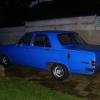After Vct Info
Announcements
-
Similar Content
-
Latest Posts
-
By funkymonkey · Posted
This is amazing. Love that you’re giving the boys an intro to cars and off the screens. They probably have an insta for the car and build posts on TikTok for their mates. -
By Murray_Calavera · Posted
It is. Your car works fine with the tank full. If you drive like a Nana it works fine. You give it a boot full with half a fuel tank, you get surge. It 100% is a fuel surge issue. Maybe have a look at installing a Hydramat if you don't want to install a surge tank. https://www.holley.com/products/fuel_systems/hydramat/ -
By funkymonkey · Posted
Hanging out in Perth for a conference. Asked for a room with a view… got a view of Bustdown Festival might stroll down and go say hi to Spotto and some of the hoonfluencers -
It’s definitely just a problem with my car, as there’s bound to be plenty of 4-600hp cars out there running a factory tank with an upgraded pump and or hanger
-
Ah right, that would be a nightmare as I only get 150ish kms before it starts having issues/half a tank, and yeah if I don’t get into it I could run it completely dry, it’s only when it comes into boost it will start to break up, it also does it in every gear which leads me to believe it isn’t fuel slosh/surge as 4th and 5th shouldn’t have enough power to cause an issue. It’s got me stumped 🙃
-





Recommended Posts
Create an account or sign in to comment
You need to be a member in order to leave a comment
Create an account
Sign up for a new account in our community. It's easy!
Register a new accountSign in
Already have an account? Sign in here.
Sign In Now